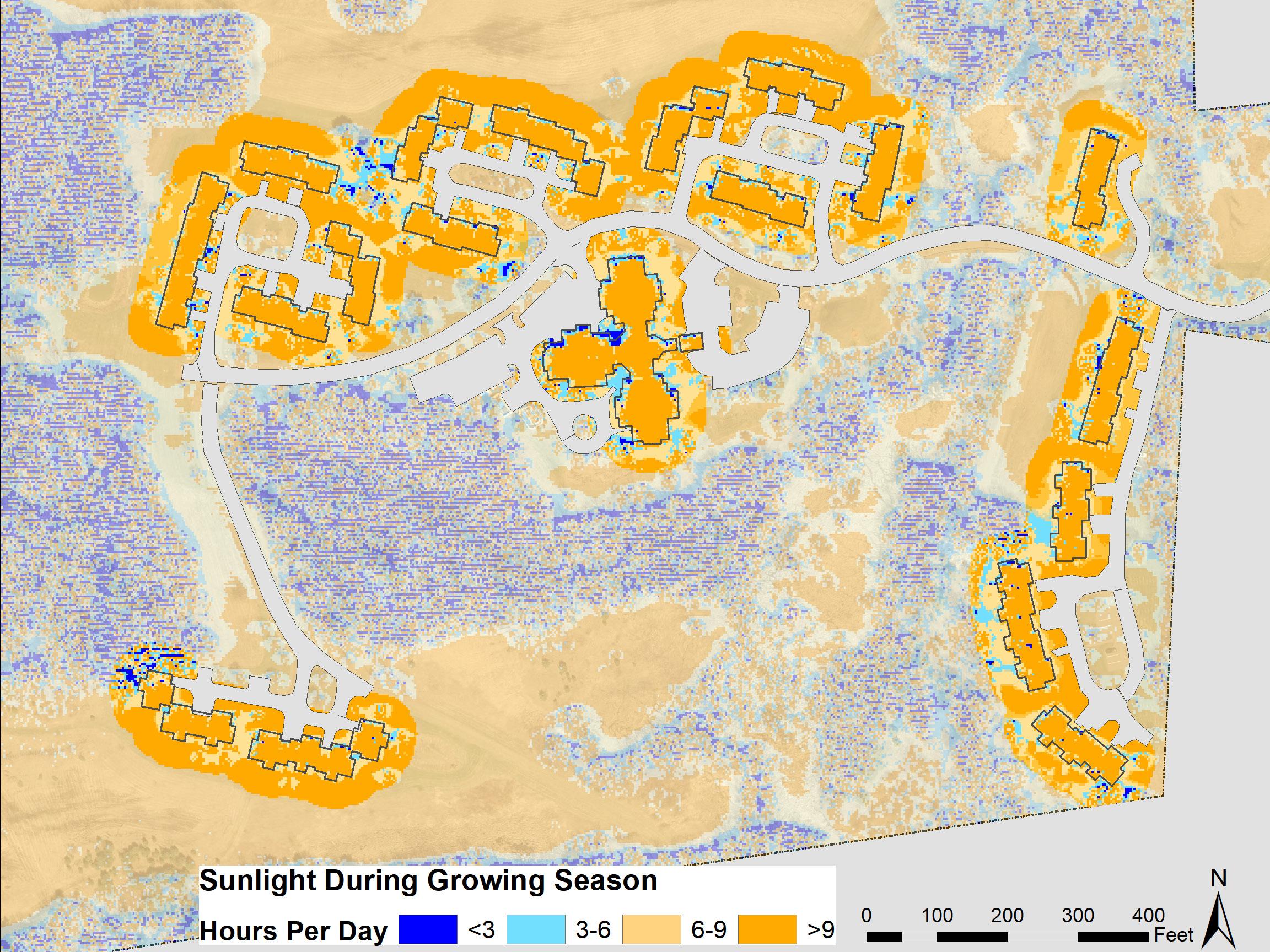Plants should be established in early spring. Prepare the site by scraping off the existing vegetation while disturbing the soil as little as possible. Mulch heavily with cardboard or woodchips. Weed these areas for one or two growing seasons after planting; after this, weed annually or as needed. Each drift should contain no more than three rows with one species in each row. Ideally, choose three species that flower at different points in the year to provide visual interest for humans and pollen for insects at different points in the season.
Example Drift Pattern Wildflower Drifts in the U.K.
The golden winged warbler. Photo Credit: American Bird Conservancy
Maintaining Early Succession
Sample Wildflower Drift Plant Palette
Without a disturbance event, most species that rely on early successional forest will abandon the site once the forest matures to the point that it is no longer suitable habitat. Meadows at Lathrop will likely take 20-30 years to mature into a forest due to wet conditions and the fact that they have been farmed for a long period of time. Land can be kept in the stage of shrubland and early succession by removing canopy-forming species such as oaks and maples or by clear-cutting the entire stand. There may be natural disturbances such as deer, beavers, or weather that make these interventions unnecessary.
False Indigo (Baptisia australis), Lanceleaf Coreopsis (Coreopsis lancelota), Joe-Pye Weed (Eupatorium perfoliatum)
Above: This drift pattern shown on Florence Road Meadow would give the appearance of a field in full bloom. Right: Species should be selected based on site conditions and ability to naturalize within a meadow.
Switchgrass (Panicum virgatum), Ironweed (Veronia noveborecensiss), New England Aster (Symphotricum Novae-angliae) Cardinal Flower (Lobelia cardinalis), Northern Blue Flag (Iris versicolor), Golden Alexanders (Zizia aurea)
Spring 2020
In early spring, mow meadows to cut back the growth of cool season grasses. This will be disruptive to wildlife so it is best to only do this once or twice. After cutting the grass back, scatter a meadow seed mix suited to those conditions. Use a wet meadow mix for wetland areas and an upland mix for dry areas.
Eli Bloch and Allison Mason
One way to establish wildflowers in the meadows is to use plugs or quart-sized plants and reduce competition around them through weeding and mulching. This is a laborious and expensive process that is impractical for large meadows. Alternatively, planting a few drifts spaced throughout the meadow could provide excellent visual appeal with less overall space planted.
Meadow Management Techniques
Overseeding Techniques
FINAL CONCEPT
Shrubland and early successional forest describes the transitional stage between grassland and forest ecosystems. There has been a 66% loss of early succession forest and shrubland habitat in New England (excluding Maine). This rare habitat is valuable to a number of species of conservation concern (Schlossberg and King (2007). The golden winged warbler and New England cottontail are two species of conservation concern that rely exclusively on early succession forest (Livatis 1999). Nearly all mammals that live in the Northeastern U.S. have some preference for early successional habitat (Fuller, Destefano 2003). Increasing early succession forest on site could increase the number and diversity of birds and mammals at Lathrop, while also sequestering carbon and potentially providing wood for building or fuel.
Planting Wildflower Drifts
Lathrop Retirement Community Landscape Master Plan
Habitat Value of Early Successional Forest and Shrubland
Northampton and Easthampton, Massachusetts
A guide to implementing meadow management recommendations
THE CONWAY SCHOOL
Final Concept: Meadow Management Techniques
26
Not for construction. Part of a student project and not based on a legal survey.
















